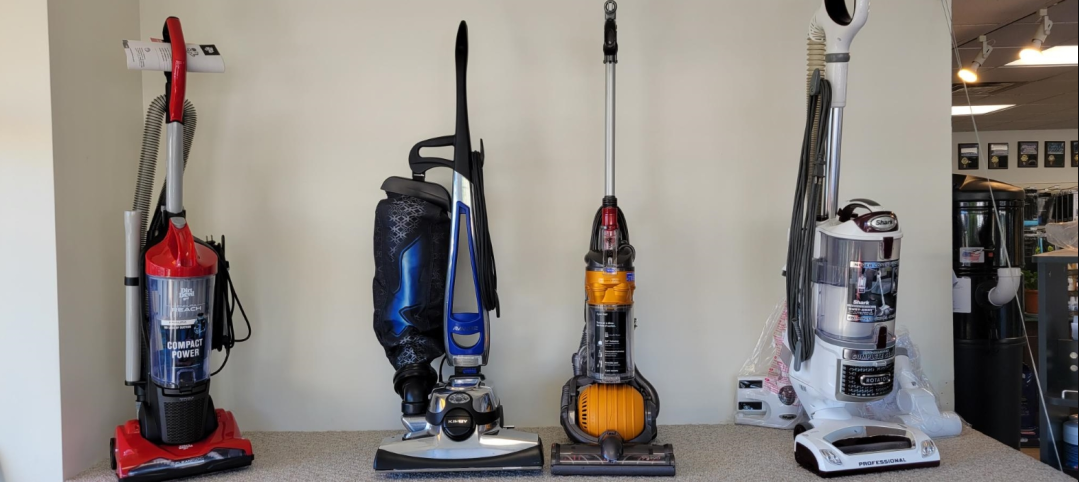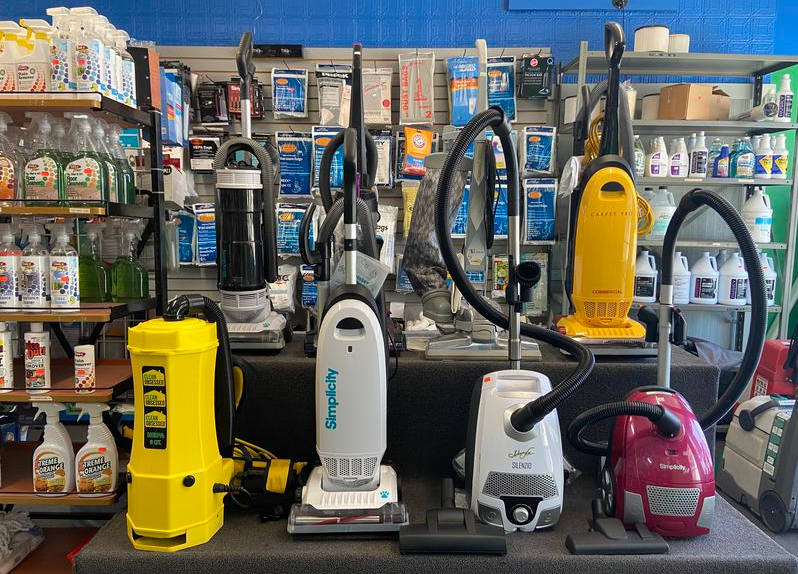How to Inspect a Used Vacuum Cleaner Before Buying | Clean Smart and Save Money

Content
A reliable vacuum cleaner is essential for maintaining a clean and dust-free home. No matter if you have pets, kids, or just need to keep your living space tidy, a vacuum cleaner can be one of the most used appliances in your household. However, the cost of a new vacuum cleaner can range from $100 to $1,000, making it a significant investment. Fortunately, buying a used vacuum cleaner can be an excellent way to save money, with prices often ranging from $30 to $300. While purchasing a used vacuum cleaner can help you stick to your budget, it’s important to ensure you’re getting a machine that will perform well and last for years. Used vacuum cleaners, especially those from reputable brands, can continue to offer great performance if they've been well-maintained. This information will help you through the process of inspecting a used vacuum cleaner before buying, so you can make an informed decision and keep your home spotless.
1 Benefits of Buying a Used Vacuum Cleaner

Cost Savings
Save significantly compared to buying a new vacuum cleaner.
Environmental Impact
Purchasing second-hand helps reduce waste and supports sustainability.
Access to High-End Models
Get premium features at a lower cost.
Proven Durability
Reliable models can continue to perform well with proper maintenance.
Detailed Explanation
Purchasing a used vacuum cleaner offers substantial cost savings, allowing you to enjoy the benefits of high-quality models at a fraction of the price. New vacuum cleaners, especially those with advanced features like HEPA filtration, multiple attachments, and strong suction power, can be expensive. By opting for a used model, you can access these premium features without paying full price. Used vacuum cleaners are often priced between $30 and $300, depending on the brand, model, and condition, making them an attractive option for budget-conscious shoppers. In cost savings, buying a used vacuum cleaner is an environmentally friendly choice. The production and disposal of household appliances contribute to environmental degradation, so by purchasing second-hand, you help reduce the demand for new products and keep functional machines out of landfills. This not only supports sustainability but also allows you to make a responsible purchase that benefits both your wallet and the planet. Moreover, buying used gives you access to a broader range of models, including those that may have been discontinued. Many high-end brands, such as Dyson, Miele, and Shark, are known for their durable and long-lasting vacuum cleaners. When properly maintained, these machines can continue to provide excellent service for years, making them a smart choice for those looking to get the most value out of their purchase.
2 Key Factors to Consider When Buying Used

Age and Usage
Look for vacuum cleaners that are relatively new and lightly used.
Condition
Carefully inspect the vacuum for wear and tear, especially on critical components like brushes, hoses, and filters.
Functionality
Test the vacuum to ensure all features, such as suction power and adjustable settings, are working properly.
Brand Reputation
Stick to trusted brands known for reliability and durability.
Detailed Explanation
When buying a used vacuum cleaner, the age and previous usage of the machine are crucial factors to consider. Vacuum cleaners typically have a lifespan of 5-10 years, depending on how frequently they are used and how well they are maintained. Opting for a vacuum that is less than 5 years old can help ensure you’re getting a machine that still has plenty of life left. It’s also important to ask the seller about how often the vacuum was used and for what purposes. A vacuum that was used lightly in a small apartment is likely to be in better condition than one used daily in a large household with pets. The condition of the vacuum is another key consideration. Begin your inspection by examining the exterior for any obvious signs of wear and tear, such as scratches, dents, or discoloration. Next, focus on the critical components that affect the vacuum's performance. Check the brushes for signs of wear or missing bristles, as worn brushes can reduce the vacuum's ability to pick up dirt and debris. Inspect the hoses for any cracks or holes that could cause a loss of suction, and ensure the filters are clean and free from excessive dust or debris. Dirty or clogged filters can hinder the vacuum’s performance and may need to be replaced if they are not in good condition. Testing the vacuum’s functionality is essential before making a purchase. If possible, ask the seller to demonstrate the vacuum on different surfaces, such as carpets, hardwood floors, and upholstery, to ensure it has strong and consistent suction power. Make sure all adjustable settings, such as height adjustments for different floor types or suction levels, work as intended. Finally, consider the brand and model of the vacuum. Reputable brands like Dyson, Hoover, and Bissell are known for producing durable and reliable vacuum cleaners that, with proper maintenance, can last for many years. Choosing a vacuum from a trusted brand can give you added confidence in your purchase.
3 Where to Find Quality Used Vacuum Cleaners

Online Marketplaces
Websites like eBay, Craigslist, and Facebook Marketplace offer a wide selection of used vacuum cleaners.
Thrift Stores
Many second-hand stores carry vacuum cleaners in good condition at low prices.
Garage Sales
Look for vacuums at neighborhood sales for potential bargains.
Refurbished Appliance Shops
Some stores specialize in refurbished vacuums with warranties.
Detailed Explanation
Finding a quality used vacuum cleaner is easier than you might think, thanks to the variety of sources available. Online marketplaces such as eBay, Craigslist, and Facebook Marketplace are popular platforms where sellers list a wide range of used vacuum cleaners. These platforms offer the convenience of browsing from home and often feature competitive prices. However, it’s important to thoroughly vet the seller by checking their ratings and reviews and asking for detailed photos and descriptions of the vacuum’s condition. This can help ensure you’re getting a vacuum that meets your expectations. Thrift stores and second-hand shops are also excellent places to find used vacuum cleaners. These stores often carry lightly used or even new appliances donated by individuals who have upgraded to newer models. Shopping at thrift stores not only supports sustainability but also provides a cost-effective way to purchase a reliable vacuum cleaner. You may even come across high-end models at a fraction of their original price, making thrift stores a great option for budget-conscious shoppers.
Garage sales are another potential source of quality used vacuum cleaners. Many people sell their old vacuums at garage sales for a fraction of their original cost, and you might have the opportunity to test the vacuum before purchasing. This can give you peace of mind knowing that the vacuum is in good working order. Thus, some stores specialize in selling refurbished appliances, including vacuum cleaners. These stores often offer warranties or return policies, providing an added layer of security for your purchase. Refurbished vacuum cleaners are typically thoroughly inspected and repaired, ensuring they perform like new, making them an excellent option for those looking to save money without sacrificing quality.
4 Tips for Inspecting a Used Vacuum Cleaner

Test Suction Power
Ensure the vacuum has strong suction by testing it on different surfaces, such as carpets and hard floors.
Inspect Brushes and Belts
Check the condition of the brushes, belts, and rollers for wear and damage.
Check the Filter and Bag/Canister
Look for clean filters and inspect the bag or canister for any signs of damage or debris.
Listen for Unusual Noises
Turn on the vacuum and listen for any abnormal sounds that could indicate motor issues or other problems.
Detailed Explanation
When inspecting a used vacuum cleaner, the first step is to test its suction power. Suction strength is one of the most critical factors in a vacuum's performance, so it’s essential to ensure that the vacuum can effectively pick up dirt and debris. If possible, test the vacuum on different surfaces, such as carpets, rugs, and hard floors, to see how well it performs across various types of flooring. Strong and consistent suction on all surfaces is a good indicator that the vacuum is in good working condition.Next, take a close look at the brushes, belts, and rollers. These components are vital for the vacuum’s ability to clean effectively, and they often experience the most wear. Inspect the brushes for signs of wear, such as missing bristles or uneven bristle length, which can affect the vacuum's cleaning performance. The belts should be checked for any signs of stretching, fraying, or cracking, as a worn belt can lead to reduced suction and cleaning efficiency.
Moreover, examine the rollers for any damage or debris that could cause them to become clogged or less effective.The filter and bag or canister are also important components to inspect. A clean filter is essential for maintaining the vacuum's suction power and ensuring it effectively captures dust and allergens. Check the filter for any signs of excessive dust or debris, and make sure it is not clogged. If the vacuum uses a bag, inspect it for any signs of tearing or damage, and ensure it fits securely in the vacuum. For bagless models, examine the canister for any cracks or damage that could affect its performance. Finally, when you turn on the vacuum, listen carefully for any unusual noises, such as rattling, grinding, or loud whirring. These sounds could indicate motor issues or problems with internal components, which could lead to costly repairs.
5 How to Maintain a Used Vacuum Cleaner

Regular Cleaning
Clean the vacuum regularly, including the brushes, hoses, and filters, to maintain performance.
Replace Worn Parts
Keep an eye on wear-prone parts like belts, brushes, and filters, and replace them as needed.
Empty the Bag/Canister Frequently
Ensure the bag or canister is emptied regularly to maintain suction power and prevent clogs.
Store Properly
Store the vacuum in a dry, cool place to prevent damage and extend its lifespan.
Detailed Explanation
Maintaining a used vacuum cleaner is essential to ensuring it continues to perform well and lasts for years to come. One of the most important aspects of maintenance is regular cleaning. This includes not only emptying the dust bag or canister but also cleaning the brushes, hoses, and filters. Brushes can easily become clogged with hair, fibers, and debris, which can reduce their effectiveness. Similarly, hoses can accumulate dirt and dust, which can lead to blockages if not cleaned regularly. Filters, particularly HEPA filters, are critical for capturing dust and allergens, so keeping them clean is essential for maintaining the vacuum's performance and air quality in your home. Regularly cleaning these components will help keep your vacuum operating at peak efficiency. Another key aspect of maintenance is replacing worn parts as needed. Over time, parts like belts, brushes, and filters will wear out and need to be replaced. Belts can stretch or crack, reducing the vacuum's suction power and effectiveness, while worn brushes can fail to pick up debris efficiently. Filters can become clogged with dust and debris, reducing airflow and suction power. Regularly inspecting these components and replacing them when necessary will ensure your vacuum continues to perform well. Most vacuum brands offer replacement parts that are easy to install, making it simple to keep your machine in good working order.
Proper storage is also crucial for maintaining your vacuum cleaner. When not in use, store your vacuum in a dry, cool place to prevent damage from moisture and temperature fluctuations. Avoid storing the vacuum in areas where it could be exposed to high humidity, such as basements, as this can lead to rust and deterioration of the internal components. By following these maintenance tips, you can extend the life of your used vacuum cleaner and ensure it continues to keep your home clean and dust-free for years to come.
Closing Remarks
Buying a used vacuum cleaner can be a smart, cost-effective choice that helps you maintain a clean home without overspending. By thoroughly inspecting the vacuum before purchase and following proper maintenance practices, you can enjoy reliable performance and extend the machine’s lifespan. If you are looking to save money, reduce your environmental impact, or find a high-end model at a lower price, buying used is a practical and sustainable option. With the right approach, you can make a wise purchase and keep your home spotless for years to come.
Faqs
What should I check when inspecting a used vacuum cleaner?
How can I ensure a used vacuum cleaner is in good condition?
What are the benefits of buying a used vacuum cleaner?
How do I test a used vacuum cleaner before purchasing?
Where can I find quality used vacuum cleaners?
What maintenance is needed for a used vacuum cleaner?
Are used vacuum cleaners reliable?
.How can I identify common issues in a used vacuum cleaner?
Leave a Comment
